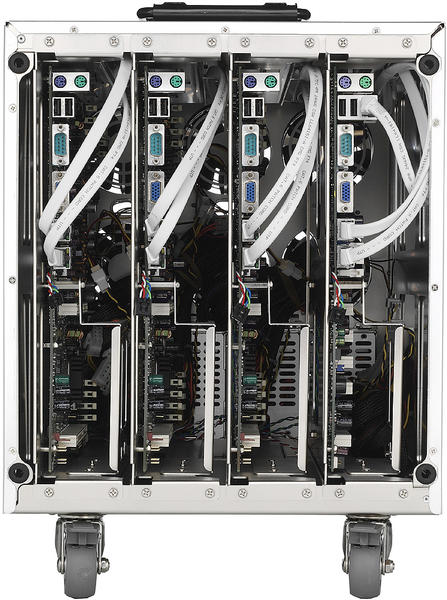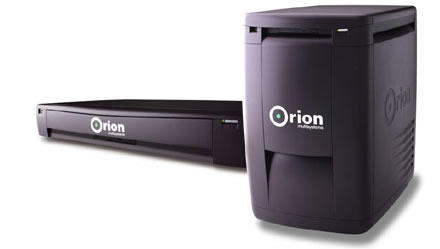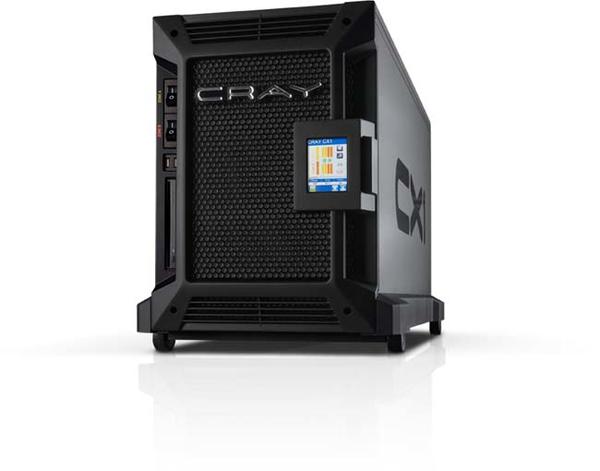
Desktop supercomputers give individual users control over compute power to run applications locally at will.
Desktop Supercomputers: Past, Present, and Future
In two previous articles, I discussed the forces that led to the rise and development of desktop supercomputers, including the history of supercomputer processors and the open source tools and communities that drove it. Along the way, I used the phrase “desktop” to mean systems that can sit beside a desk (i.e., a “deskside” system). In this article, I review the first desktop supercomputers, focusing on what they offered, along with some comments about why they failed. However, this lack of commercial success does not mean that these systems were not influential, which is precisely why I want to discuss them.
After looking at these systems, I will talk about present-day desktop supercomputers. Even if you do not see the phrase “desktop supercomputer” regarding current systems, that does not mean they do not exist in a vibrant range of options. Being an engineer, I like to think about future options in this space. Like many other people, I like performance that can solve problems faster, solve larger problems, or allow for new approaches to solving problems.
Before jumping into all these discussions, it is important to review power, because desktop supercomputers need to be able to plug into standard power outlets in offices and homes. Without the ability to use standard outlets, the systems would reside in a data center, which would defeat the purpose of being a desktop system.
Power
Homes, offices, and labs are not data centers and have power and cooling limitations. Standard wall sockets in the US are 120V, and common amperage values in the home are 15 and 20A. A 15A circuit has a capability of 1,800W (120 × 15 = 1,800), and a 20A circuit has a capability of 2,400W.
The US National Electrical Code (NEC) rules and best practices state that the design wattage for typical residents is 80% of the maximum. The maximum usable wattage values are then 1,920W (20A), 1,440W (15A), and 960W (10A). Twenty-amp circuits are common in offices and homes. However, in homes, these circuits are sometimes broken up (e.g., into two 10A circuits).
Past Desktop Supercomputers
Desktop (deskside) supercomputers are not new, but three past systems were pivotal. Orion Multisystems released the first purpose-built desktop supercomputer, which used a revolutionary low-power processor and a custom processing board. The second system, the TyanPSC Typhoon, switched gears to use commodity processors and motherboards in a custom deskside chassis. A third system, from Cray, used commodity processors with custom motherboards and chassis. It focused on incorporating Cray’s high-performance computing (HPC) expertise into a personal system.
Orion Multisystems
Transmeta Corporation created a novel CPU that had its own instruction set and used software to translate other CPU instructions to “Transmeta” instructions. A software layer, called Code Morphing Software (CMS), translated instructions from other CPUs to Transmeta instructions. The goal of this approach was to design a very efficient low-power processor without the constraints of an existing instruction set architecture (ISA). The CMS comprised an interpreter, a runtime system, and a dynamic binary translator – all of it just software. All that was needed for a Transmeta processor to run a different ISA was software. Theoretically, then, costs should be much less than designing and fabricating a CPU.
The first CPU from Transmeta was the Crusoe processor launched in January 2000 targeting x86 processors. A 700MHz Crusoe CPU ran x86 applications at about the same speed as a 500MHz Pentium III CPU. However, it was less expensive and used less power than the Pentium III.
Transmeta created a second generation of CPUs released in 2004, named Efficeon, that also had an x86 CMS. The Efficeon CMS layer more closely tracked the Pentium 4 rather than the Pentium III, as Crusoe did. It supported an integrated memory controller and a HyperTransport I/O bus. The processor started at a speed of 1.2GHz. Although test results are hard to come by, it is thought that its performance was a bit less than a Pentium M, but it was assumed to have used less power.
One of the first companies to utilize the Transmeta CPUs was Orion Multisystems, which in April 2004 introduced two multinode desktop/deskside systems. In a presentation, Orion clearly stated that these systems were designed for the individual engineer, not as a shared system.
The first system, the DT-12, was a true desktop system with 12 “nodes” on a single special motherboard. Each node was a Transmeta Efficeon processor connected to the other nodes over Gigabit Ethernet (GigE). Each node also had 512MB of memory, and the system had a 160GB hard drive (which was quite a bit of storage in 2004). The system cost between $20,000 and $30,000. As with other desktop systems, the DT-12 plugged into standard 120V outlets and used less than 200W of power. Orion also introduced a 96-node deskside system that used 1,500W of power in a chassis with eight DT-12 motherboards (Figure 1) for about $170,000 fully configured. Unfortunately, Orion shut down operations in February 2006.
TyanPSC
Another key example of a desktop/deskside supercomputer is the TyanPSC Typhoon Personal Supercomputer (PSC), which was launched at the Computex Taipei show in June 2006. It used a “blade” configuration, wherein commodity motherboards slid into and out of a chassis (Figure 2). Notice that this first version of the TyanPSC, the Typhoon 600, had four motherboards, each in its own blade, in a deskside chassis on wheels. The chassis was 14 × 12.6 × 26.7 inches. Although it sounds compact, for a deskside system, it was large.
 Figure 2: TyanPSC Typhoon (from Tyan FTP site). The rollers on the bottom of the chassis helped to move it around.
Figure 2: TyanPSC Typhoon (from Tyan FTP site). The rollers on the bottom of the chassis helped to move it around.
The initial Typhoon 600 blades used Intel processors. Each blade had two sockets, so you could get as many as 16 cores in the original system with dual-core processors, as well as a single SATA drive per blade. It also supported up to 64GB of system memory, and the chassis had integrated networking with nine GigE ports: two for each blade and one for connecting externally. In total, the system was designed with a power limit of 1,400W (four 350W power supplies plugged into standard 120V wall sockets). The Typhoon ran Linux, but it could also run Microsoft Windows Compute Cluster Server 2003, which was Microsoft’s push into supercomputing and smaller scale HPC.
At Supercomputing 2006 (SC06), Tyan announced the availability of quad-core Intel processors, allowing up to 32 cores per system, at a starting price of less than $15,000. They also announced InfiniBand capability. Tyan further developed the PSC with Opteron blades and added x16 PCIe slots on the blades to add a high-performance GPU for visualization.
Cray CX1
The Cray CX1 deskside system had a big impact on HPC. Cray, a leader in primarily large centralized supercomputing systems, released this deskside supercomputer (Figure 3) that focused on the individual in September 2008. They had taken all the knowledge and experience from their large systems and put it into this individual workstation.
The chassis supported up to eight blades, with each blade a dual-socket, Intel-based motherboard with Xeon 5400, 5500, or 5600 processors with two, four, or six cores. As with the previous systems, you could plug it into normal home or office outlets. It was designed to use a 20A circuit that provided up to 1,920W, but it only used a maximum of 1,600W.
The blades had up to eight DDR3 DIMM slots along with two 2.5-inch SATA hard drives (HDDs) and a single x16 PCIe port. You could have a one-slot blade with four connected 3.5-inch HDDs that connected to other blades by the PCIe x16 slot, but this took the place of an adjacent compute blade. As with the previous two desktop/deskside systems, it had built-in GigE or DDR InfiniBand networking.
Cray also introduced a visualization or GPU compute blade that would connect to another blade through the PCIe slot. You could use an Nvidia Quadro GPU for visualization, or you could connect up to four external S1070 GPU compute chassis that housed up to four C1600 GPUs.
The Cray CX-1 had some additional unique features, such as an active noise cancellation system and an integrated touchscreen control panel from which you could control each of the blades or check power consumption, processor temperatures, chassis fan speeds, and other system metrics. One of the interesting features of the Cray CX-1 was that, like the TyanPSC Typhoon, it was designed to run either Red Hat Enterprise Linux (RHEL) or Microsoft Windows. This was also during the time that Microsoft was making a push into the HPC world.
Why These Three Systems?
These three systems are important for different reasons. The Orion Multisystems desktop supercomputer was dead-on-target for a growing market of systems that provided more than the processing power of a single- or dual-socket motherboard in a power-efficient case. It combined a very innovative, low-power processor with a custom-built system board and chassis; however, the combination of a new, untried processor with custom boards and chassis at a high starting price ($20,000) did not allow the system to succeed.
The TyanPSC Typhoon tried to reduce pricing by using commodity two-socket motherboards and processors with the chassis the only custom feature. It broke ground in that it could run Microsoft Windows Compute Cluster Server 2003 in addition to Linux. The thought was that by running Windows, it would appeal to a larger audience. The hope in using commodity components is that it would reduce costs. It did this relative to the Orion Multisystems to the point that the introductory price was around $15,000. However, it did not sell as well as hoped, partly because it was still too expensive.
The third system was remarkably interesting because it was built by a major supercomputing company with a massive amount of HPC experience. The Cray CX-1 was a very well built system that used all custom components, except the processors, which allowed Cray to provide a completely integrated solution. It was also innovative in that it offered GPUs either for visualization or computing. Interestingly, the starting price was $25,000, which was not that much more than the TyanPSC, especially considering it was virtually a completely custom setup. However, the CX-1 did not survive too long, again, mostly because of the price.


